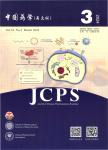Structure-activity relationship of cyclic ADP-ribose, an update
Structure-activity relationship of cyclic ADP-ribose, an update作者机构:The Calcium Signalling Group Department of Biochemistry and Signal Transduction and Department of Biochemistry and Molecular Cell Biology University Medical Center Hamburg-Eppendorf
出 版 物:《Journal of Chinese Pharmaceutical Sciences》 (中国药学(英文版))
年 卷 期:2013年第22卷第2期
页 面:127-136页
核心收录:
学科分类:1007[医学-药学(可授医学、理学学位)] 1001[医学-基础医学(可授医学、理学学位)] 10[医学]
基 金:supported over the past couple of years by the Deutsche Forschungsge-meinschaft the Gemeinnützige Hertie-Stiftung the Well-come Trust the Deutsche Akademische Austauschdienst
主 题:Cyclic ADP ribose Calcium signaling Cyclic ADP ribose analogue Ryanodine receptor TRPM2 Cellular signal transduction
摘 要:Cyclic ADP-ribose (cADPR) is a universal Ca2+ mobilizing second messenger in many different cell types and organisms. cADPR activates Ca2+ release from endo/sarcoplasmic reticulum via ryanodine receptors. In addition, Ca2+ entry secondary to Ca2+ depletion is at least one of the mechanisms in which cADPR triggers Ca2+ inflow, too. Analogues of cADPR have been prepared by chemical and chemo-enzymatic routes. Most of the analogues were analyzed for biological activity in intact or permeabilized Jurkat T cells (a human T-lymphoma cell line). As a systematic approach, analogues were grouped according to alterations in the base, the northern ribose, the southern ribose, the pyrophosphate backbone, or in complex modifications, comprising more than one part of the molecule. Biological activity of the analogues is reviewed, with special emphasis on Jurkat T cells.



